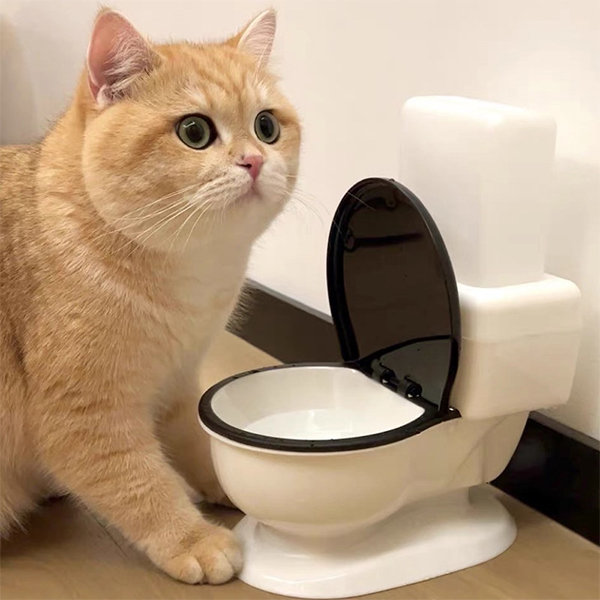Never Flush Cat Poop Down Your Toilet - Protect Your Pipes Infrastructure
Never Flush Cat Poop Down Your Toilet - Protect Your Pipes Infrastructure
Blog Article
Right here in the next paragraph you can get a bunch of great insight with regards to How to Dispose of Cat Poop and Litter Without Plastic Bags.

Intro
As feline owners, it's important to be mindful of exactly how we dispose of our feline friends' waste. While it might seem convenient to purge cat poop down the commode, this method can have detrimental repercussions for both the setting and human health and wellness.
Ecological Impact
Purging cat poop presents harmful pathogens and parasites into the water system, posing a significant danger to aquatic ecological communities. These contaminants can negatively impact marine life and compromise water top quality.
Health Risks
Along with ecological issues, flushing pet cat waste can additionally position health dangers to humans. Pet cat feces may include Toxoplasma gondii, a parasite that can create toxoplasmosis-- a possibly severe health problem, especially for expectant females and individuals with weakened immune systems.
Alternatives to Flushing
Fortunately, there are safer and much more liable methods to deal with feline poop. Consider the following choices:
1. Scoop and Dispose in Trash
The most usual method of getting rid of pet cat poop is to scoop it into an eco-friendly bag and toss it in the trash. Make sure to make use of a devoted trash scoop and get rid of the waste immediately.
2. Usage Biodegradable Litter
Go with biodegradable pet cat trash made from materials such as corn or wheat. These litters are eco-friendly and can be safely taken care of in the trash.
3. Bury in the Yard
If you have a lawn, take into consideration burying cat waste in a designated area far from vegetable gardens and water resources. Make sure to dig deep sufficient to prevent contamination of groundwater.
4. Install a Pet Waste Disposal System
Invest in a family pet garbage disposal system especially designed for pet cat waste. These systems use enzymes to break down the waste, decreasing odor and environmental impact.
Conclusion
Accountable pet possession prolongs beyond providing food and sanctuary-- it likewise entails correct waste administration. By refraining from flushing pet cat poop down the toilet and selecting alternate disposal approaches, we can reduce our ecological impact and shield human health and wellness.
Why Can’t I Flush Cat Poop?
It Spreads a Parasite
Cats are frequently infected with a parasite called toxoplasma gondii. The parasite causes an infection called toxoplasmosis. It is usually harmless to cats. The parasite only uses cat poop as a host for its eggs. Otherwise, the cat’s immune system usually keeps the infection at low enough levels to maintain its own health. But it does not stop the develop of eggs. These eggs are tiny and surprisingly tough. They may survive for a year before they begin to grow. But that’s the problem.
Our wastewater system is not designed to deal with toxoplasmosis eggs. Instead, most eggs will flush from your toilet into sewers and wastewater management plants. After the sewage is treated for many other harmful things in it, it is typically released into local rivers, lakes, or oceans. Here, the toxoplasmosis eggs can find new hosts, including starfish, crabs, otters, and many other wildlife. For many, this is a significant risk to their health. Toxoplasmosis can also end up infecting water sources that are important for agriculture, which means our deer, pigs, and sheep can get infected too.
Is There Risk to Humans?
There can be a risk to human life from flushing cat poop down the toilet. If you do so, the parasites from your cat’s poop can end up in shellfish, game animals, or livestock. If this meat is then served raw or undercooked, the people who eat it can get sick.
In fact, according to the CDC, 40 million people in the United States are infected with toxoplasma gondii. They get it from exposure to infected seafood, or from some kind of cat poop contamination, like drinking from a stream that is contaminated or touching anything that has come into contact with cat poop. That includes just cleaning a cat litter box.
Most people who get infected with these parasites will not develop any symptoms. However, for pregnant women or for those with compromised immune systems, the parasite can cause severe health problems.
How to Handle Cat Poop
The best way to handle cat poop is actually to clean the box more often. The eggs that the parasite sheds will not become active until one to five days after the cat poops. That means that if you clean daily, you’re much less likely to come into direct contact with infectious eggs.
That said, always dispose of cat poop in the garbage and not down the toilet. Wash your hands before and after you clean the litter box, and bring the bag of poop right outside to your garbage bins.
https://trenchlesssolutionsusa.com/why-cant-i-flush-cat-poop/

I came across that piece of writing about How to Dispose of Cat Poop and Litter Without Plastic Bags when doing research the internet. Loved our entry? Please share it. Help others locate it. Thanks a lot for going through it.
Get Offer Report this page